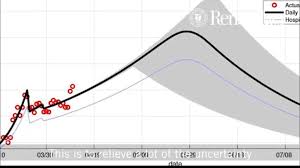Source: saratogian.com
TROY, N.Y. — A researcher from Rensselaer Polytechnic Institute is suggesting that the coronavirus will peak in the Capital Region in the second half of May or early June.
Malik Magdon-Ismail tailored a robust machine learning model that can predict pandemic impact even in smaller cities, with 75% of the population in the Capital Region in New York remaining at home, the COVID-19 pandemic will peak locally in the second half of May. If the rate of people staying home drops to 50%, it will peak in early June, according to the model.
Magdon-Ismail said he tailored the models he is developing to work with sparse data points, like those available during the early phase in a pandemic or in smaller cities, which ordinarily make trend-spotting difficult.
“There are no simple, robust, general tools that, for example, officials in Albany could use to make projections,” said Magdon-Ismail, a professor of computer science, and expert in machine learning, data mining, and pattern recognition. “These models show that the projections vary enormously from one city to another. This knowledge could relieve some of the uncertainty that is around in developing policy.”
Using county data available through the New York State Department of Health and Mental Hygiene, Magdon-Ismail said he has developed models that can predict local aspects of the pandemic such as the rate of infections over time, the infectious force of the pandemic, the rate at which mild infections become serious, and estimates for asymptomatic infections. The research model is ongoing work and, given the time-sensitive nature of the work, earlier versions have been released on the arXiv preprint server, which is moderated but not peer-reviewed.
His model for the Capital Region — which incorporates the data from Albany, Rensselaer, Saratoga, and Schenectady counties up to April 10 — uses a total at-risk population of 855,000 to estimate that daily confirmed infections will peak at 1,490 on June 8 with 50% staying at home, or 750 on May 28 with 75% staying at home. The number of infections would total 58,000 or 29,000, respectively. Confirmed infections as of April 10 are approximately 1,000 and the model estimates 14,000 asymptomatic cases at that time, according to a news release.
“The machine gives you the model that best fits the data, but it turns out the best is usually a very fragile principle. There are lots of different models, lots of different explanations that are essentially as good,” Magdon-Ismail said in the news release. “To make the output robust, we consider the collection of models that have near-optimal levels of consistency with the data. I find a variety of models that fit the data, and then I use all of those models together to predict.”
